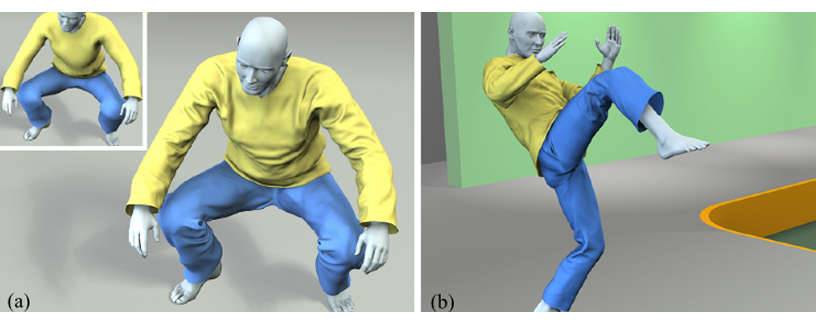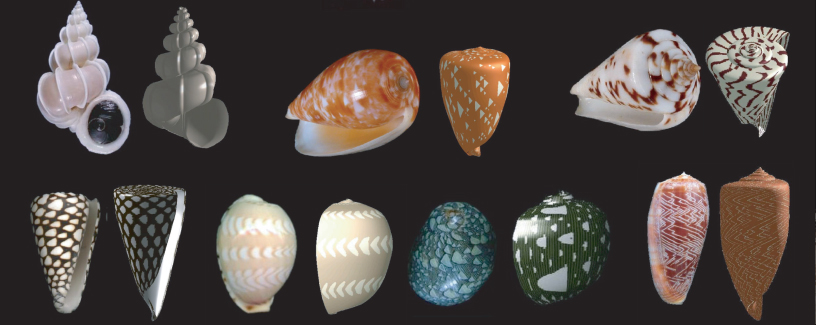Lucia Jacobs
Professor of Psychology
Keywords: evolution
Research Areas: ecology and evolution of navigating choices: how animals, from insects to humans, make choices about what to eat, how to navigate and how to integrate diverse sources of information (experiential, social and environmental) to make adaptive decisions in uncertain environments
Website: http://psychology.berkeley.edu/people/lucia-f-jacobs
Research Description:
Our research group studies the adaptive value of choices – about food, about routes in space, even about social relationships – about balancing options with imperfect information in a noisy world.
A large focus of our lab is the study of navigating choices in space. All mobile animals track the locations of prey, predators, mates and competitors. Many animals do this using olfaction, our current focus in this area. Our new funding to study this behavior in diverse species. (http://www.dailycal.org/2015/09/28/uc-berkeley-professor-team-receive-grant-to-study-smell/) will allow us to study this behavior in humans, pet dogs, cockroaches, terrestrial molluscs and hermit crabs, working closely with mouse and fly neuroscientists as well as computational neuroscientists. Our goal is to identify the universal algorithms used by animals to navigate in space using odors. We are also expanding our studies of navigation to what we are calling ‘cognitive biomechanics’. Studying wild squirrels and laboratory rodents, we are interested in how an animal integrates its spatial knowledge of possible route choices with its knowledge of its ability to move efficiently in different biomechanical substrates. We collaborate in this work with Robert Full and his students in Integrative Biology (http://polypedal.berkeley.edu/).
We also study foraging decisions wild fox squirrels, both for the solitary squirrel and for the squirrel making decisions in competitive social contexts. Fox squirrels make thousands of foraging decisions – should I eat or cache this nut? – during the critical fall harvest of acorns and other tree seeds. Such seeds are hidden individually yet squirrels cannot defend the areas where they are hidden. Instead, they rely on careful economic decisions on which nuts to hide and where to hide them, as well as spatial memory for cache locations. Finally, they also steal caches made by other squirrels, which is an area of our current interest. We study these questions year-round using computational models of behavior as well as experimental and observational studies of a small population of individually-marked, habituated fox squirrels on the Berkeley campus.
In earlier work, our group studied how knowledge of a species’s cognitive niche (the ecology of its species, sex and age) can predict patterns of cognitive abilities and brain structure, in particular the hippocampus. We formalized such patterns in the parallel map theory, an evolutionary model of navigation and the evolution of the hippocampus in vertebrates (Jacobs & Schenk, 2003). Here Edward Tolman’s cognitive map is an integration of parallel spatial representations of space, the bearing and the sketch maps, constructed by complementary hippocampal subfields. This creates a flexible and robust cognitive structure for orientation in mammals and we have extended this analysis to birds and other vertebrates (Jacobs & Menzel, 2014). Recently, I have re-interpreted the parallel map theory of hippocampal function in light of olfactory navigation, proposing that the main function of the olfactory system of vertebrates is to form the foundation of the cognitive map, with a robust and flexible parallel map architecture (Jacobs, 2012).
Selected Publications:
-
Jacobs, L. F., Arter, J., Cook, A., & Sulloway, F. J. (2015). Olfactory orientation and navigation in humans. PLoS ONE, 10(6) e0129387. doi:10.1371/journal.pone.0129387.s001.
-
Delgado, M.M., Nichols, M., Petrie, D.J. & Jacobs, L.F. (2014) Fox squirrels match food assessment and cache effort to value and scarcity. PLoS ONE, 9(3), e92892. doi:10.1371/journal.pone.0092892.s003.
-
Evan L. MacLean, Brian A. Hare, Charles L. Nunn, Elsa Addessi, Federica Amici, Rindy C. Anderson, Filippo Aureli, Joseph M. Baker, Amanda E. Bania, Allison M. Barnard, Neeltje J. Boogert, Elizabeth M. Brannon, Emily E. Bray, Joel Bray, Lauren J. N. Brent, Judith M. Burkart, Josep Call, Jessica F. Cantlon, Lucy G. Cheke, Nicola S. Clayton, Mikel M. Delgado, Louis J. DiVincenti, Kazuo Fujita, Chihiro Hiramatsu, Lucia F. Jacobs, Kerry E. Jordan, Jennifer R. Laude, Kristin L. Leimgruber, Emily J. E. Messer, Antonio C. de A. Moura, Ljerka Ostojić, Alejandra Picard, Michael L. Platt, Joshua M. Plotnik, Friederike Range, Simon M. Reader, Rachna B. Reddy, Aaron A. Sandel, Laurie R. Santos, Katrin Schumann, Amanda M. Seed, Kendra B. Sewall, Rachael C. Shaw, Katie E Slocombe, Yanjie Su, Ayaka Takimoto, Jingzhi Tan, Ruoting Tao, Carel P. van Schaik, Zsófia Virányi, Elisabetta Visalberghi, Jordan C. Wade, Arii Watanabe, Jane Widness, Thomas R. Zentall, Yini Zhao. (2014) The evolution of self-control. Proceedings of the National Academy of Sciences, 111(20), E2140–8. doi:10.1073/pnas.1323533111
-
Jacobs, L.F. & Randolf Menzel (2014) Navigation outside the box: what the lab can learn from the field and what the field can learn from the lab. Movement Ecology 2: 3. DOI 10.1186/10.1186/2051-3933-2-3.
Bettis, T. J., & Jacobs, L. F. (2013). Sex differences in memory for landmark arrays in C57BL/J6 mice. Animal Cognition, 16(6), 873–882
-
Jacobs, L. F. (2012). From chemotaxis to the cognitive map: the function of olfaction. Proceedings of the National Academy of Sciences, 109, 10693–10700.
-
Waismeyer, Anna S., & Jacobs, Lucia F. (2012). The emergence of flexible spatial strategies in young children. Developmental Psychology 49, 232-42.
Chai, Xiaoqian J., and Jacobs, Lucia F. (2012). Digit ratio predicts sense of direction in women. PloS One 7, e32816.
-
Chai, Xiaoqian J., and Jacobs, Lucia F. (2010). Effects of cue types on sex differences in human spatial memory. Behavioral Brain Research 208, 336-342.
-
Waisman, Anna S., and Jacobs, Lucia F. (2008). Flexibility of cue use in the fox squirrel (Sciurus niger). Animal Cognition 11, 625-636.
-
Jacobs, L. F. (2006). From movement to transitivity: the role of hippocampal parallel maps in configural learning. Reviews in the Neurosciences, 17(1-2), 99–109.
-
Jacobs, Lucia F., and Schenk, Françoise. (2003). Unpacking the cognitive map: the parallel map theory of hippocampal function. Psychological Review 110, 285-315.













